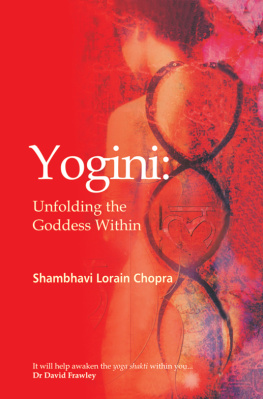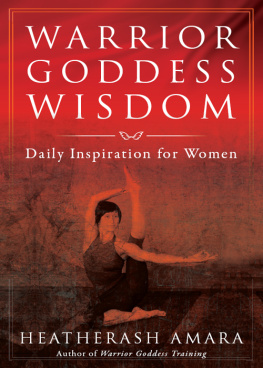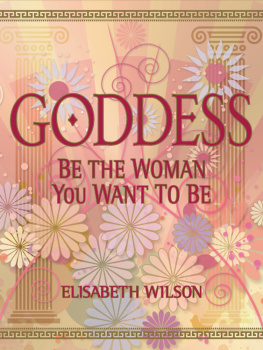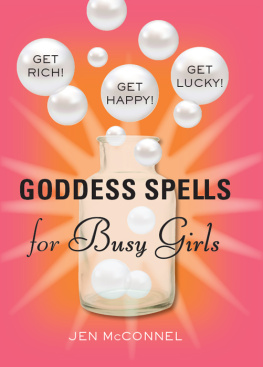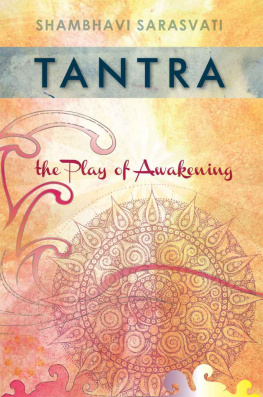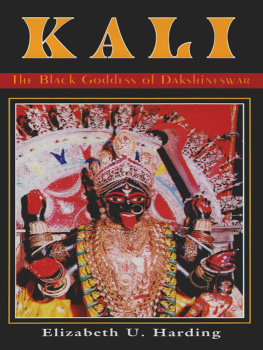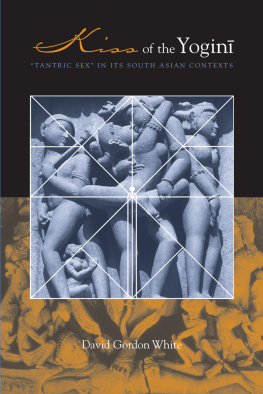First edition 2006
Reprint March 2006
Shambhavi Lorain Chopra, 2006. For further information, the author may be contacted at shambhavi.chopra@gmail.com
ISBN: 81-8328-035-8
All rights reserved. No part of this book may be reproduced, stored in a retrieval system or transmitted in any form or by any means electronic, mechanical, photocopying, recording or otherwise without the prior permission of the publisher.
Published by
Wisdom Tree
4779/23, Ansari Road
Daryaganj
New Delhi-110002
Ph.: 23247966/67/68
Published by Shobit Arya for Wisdom Tree; edited by Manju Gupta; page design layout by Shambhavi Lorain Chopra and Kamal P. Jammual; back cover by Sanjay Das; typeset at Marks & Strokes, New Delhi-110002 and printed at Print Perfect, New Delhi-110064

Foreword
T here are many books on Tantra published in the world today. Most play upon either Tantra as sex or Tantra as involving strange magical practices. Few address the deeper aspects of Tantra or Tantra as a sadhana or spiritual path. Those that attempt this, generally just repeat the same ideas found in old Tantric texts, missing out on the drama, beauty and play of living Tantra. There is very little through which real Tantra can come alive and communicate to us through our own life experience. Shambhavi has provided an alternative to this a glowing presentation of the human, naturalistic and yogic sides of Tantra, all woven together into her fascinating life-journey of transformation.
My contact with Shambhavi proceeded through an unusual channel. I received a letter from the great Indian scholar, Lokesh Chandra in December 2004, requesting to meet me during my next trip to Delhi. I had seen him several times before and was always eager to hear his profound remarks, not only on Indian culture but also on the state of the world. Curiously the letter arrived though it was only marked David Frawley, Santa Fe, New Mexico, USA on the postmark! In it he mentioned a woman named Lorain Chopra, who also wanted to see me during my next trip to Delhi. He gave me her e-mail as a means of communicating with him as he had none of his own, and so our destinies crossed.
When I came to Delhi the following March, my host B.M. Thapar arranged a gathering and invited Lokesh, Lorain and a number of other friends for a visit. This was my first encounter with Shambhavi. She mentioned her interest in Tantra, specifically my book, Tantric Yoga and the Wisdom Goddesses, and gave me some of her own writings to look at. We arranged to meet privately later on so that I could give her my ideas about them.
Reading her writings, I was quite surprised. Many people approach me with writings on various subjects, particularly in India, but the writing is often poorly done or the subject is rather abstruse and of limited interest. I try to be kind to them but it is not common that one meets with someone who has a deep and natural expression, as was her case, which one can really respond positively to.
Shambhavis writings were very fresh, direct, insightful and a joy to read. Her language was quite clear and modern and she could communicate well with a wide range of readers.
We met several times more during my stay in Delhi. Each time she brought me one or two other items. Clearly she had many of these articles. She mentioned she was writing a book, but I had no idea that it was already nearly complete.
After I returned to America, she continued to send more and more of her writings. She had not only an entire book but her very own style and cadence of expression that was unique and engaging. This was not the usual, dry, scholarly Tantra or the nave personal experiences that one often reads or hears about; it was a presentation of Tantra that was at once profound, personal, aesthetic and adventurous. It was not an imaginary novel but her own experiences that were often more interesting than what novelists write about. Naturally I was happy to write a foreword for her, when she made this request of me some time later.
A real experience of Tantra is not just a Tantric encounter group, or getting a Tantric guru to chant mantras to help one out with ones difficulties in life. It consists of a direct contact with the Tantric deities and their energies as living powers, both within and around us. It requires working with the forces of Nature as powers of consciousness, discovering the shakti or spiritual energy in life behind all that we see and experience.
Tantric sadhana is a sadhana of life and Nature. It does not occur anywhere apart from ones daily life or apart from the natural world around us. It is a blending of our own nature with the greater cosmic Nature. It is not a purely human experience but integrates the human experience into the greater cosmic dance.
The key to Tantra lies in the Tantric deities, the forms of Shiva and Shakti as the cosmic masculine and feminine forces. Yet these Tantric devatas are not simply gods and goddesses made in the human form. They are our own inner divinity in its universal expression, of which our human form is but a metaphor. They are not just psychological symbols, as many thinkers like to make them out today, but existential powers and presences that dwarf the human and put our entire psychology to rest.
Shiva is the mountain and shakti is the mountain stream as much as they are the human male and female. Yet these forces are one. We as human beings are also the mountain and the mountain stream, the root of the tree (Shiva) and its leaves, flowers and fruit (shakti). Our humanity is a mask for our universality, in which exists our true being beyond birth and death.
Tantra discovers the Divine in life, in the rasas or essences of beauty and feeling that all our experiences are seeking. It is an alchemic process, a process of distilling the light out of darkness, which fills everything with colour. Tantra means the fabric of what life is woven of. It is these rasas that are the threads out of which our life experience is woven, and which link the outer world of our experience to the inner realms of energy and awareness from which it arises, embracing all that is and is not.
Tantra is about awakening energy at a higher level, frequency and velocity. It is about balance; not as a cancelling out of forces, but as a profound union that produces a higher life, meaning and way of expression. In this Tantric process, different goddesses have their important roles. Kali unfolds the transformative forces of time and space, time as the creative flow of transformation and space as the womb or matrix of new energies. She sets our sadhana in motion and keeps it going with her relentless force that is at times almost overwhelming.
Tara takes us from one new level of experience to another, allowing us to ascend to higher and higher planes, breaking through obstacles and boundaries, and removing negative energies with her rudra force. Bhairavi raises the kundalini or fire energy from the root chakra below, to rush impetuously upward with indomitable force. Sundari provides the bliss and the descending flow of

